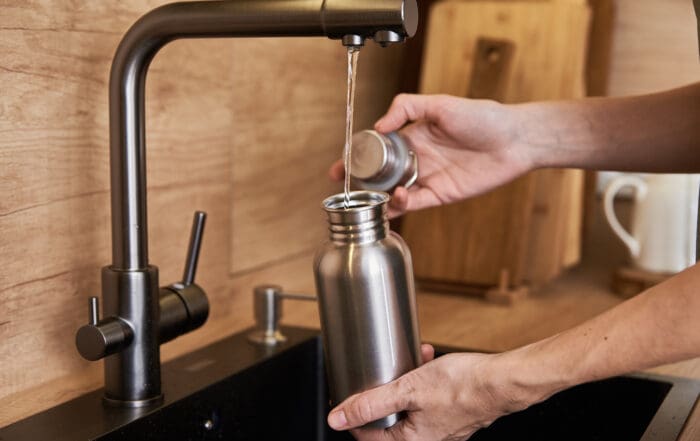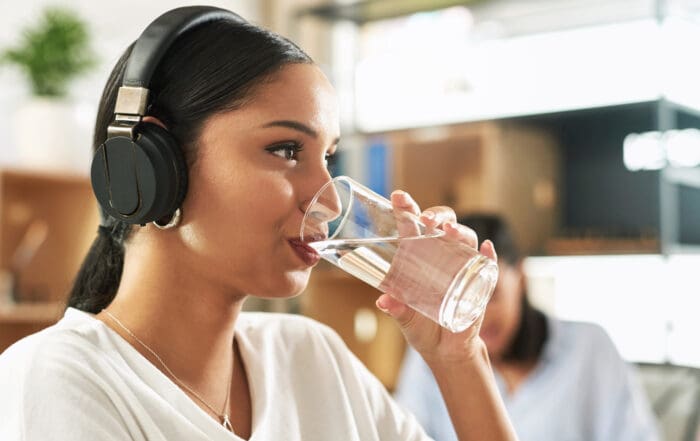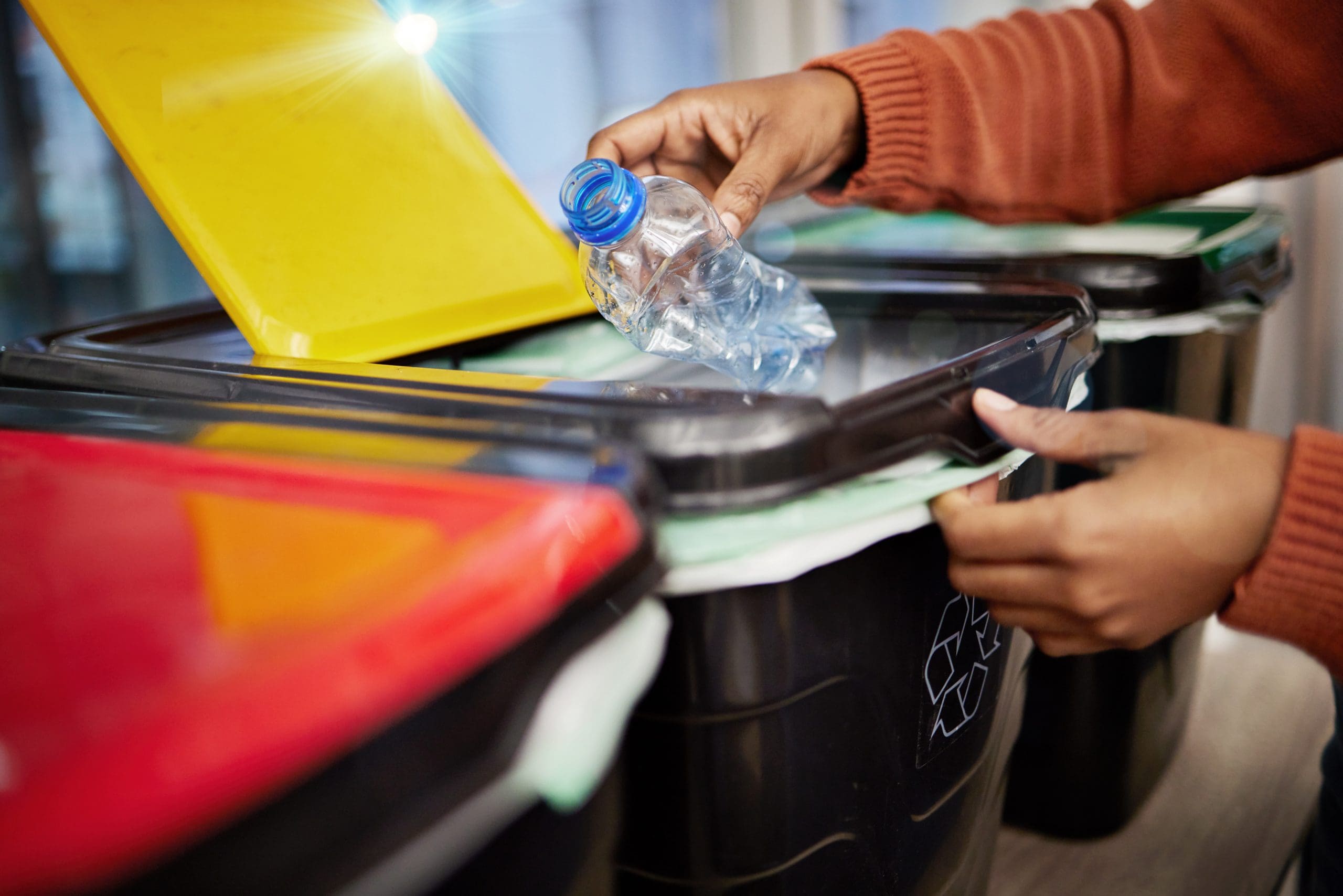
Breaking Down the Myths: The Truth About Recycling #2 Plastics
In the collective consciousness of climate action, recycling is considered an essential task for environmentally responsible living. It is an act of fidelity towards a livable planet. But there are myths floating around, clouding our judgment and making us doubt the efficacy of our recycling efforts.
As a company committed to reducing plastic and recycling plastics responsibly, Artesian Bottleless Water is dispelling some common myths about #2 plastic recycling and how you can do more to keep Oklahoma City, OK, clean of plastic waste and pollution.
Unveiling the Enigma: What Are #2 Plastics, Anyway?
Before we dig into the murky waters of recycling, it’s essential to understand what we’re dealing with. #2 plastics, also known as high-density polyethylene (HDPE), are widely present in the packaging industry. They include grocery bags, milk jugs, shampoo bottles, and a multitude of containers. They stand out due to their sturdiness and relatively high melting point, making them ideal for applications that require durability and the ability to withstand high temperatures. Despite being the preferred plastic for bottle production, #2 plastics are often misunderstood, leading to misconceptions that can hamper their proper disposal and recycling.
Understanding the Symbols
Each plastic is adorned with a recycling symbol, usually a number surrounded by a triangular arrow. This is known as the Resin Identification Number. These symbols denoting #2 plastics signify high-density polyethylene, a generally recyclable material. However, the symbol isn’t a guarantee of the material’s fate; it’s only the first step in the recycling journey.
Beyond #2 plastics, several other Resin Identification Numbers are essential for consumers to recognize for effective recycling. The #1 symbol, for instance, represents polyethylene terephthalate (PET or PETE), commonly found in soda and water bottles, as well as some food packaging. PET is one of the most recycled plastics, notable for its clear appearance and strength.
The #3 symbol denotes vinyl or polyvinyl chloride (PVC), used for plumbing pipes, certain toys, and blister packaging. Due to its composition, PVC recycling is less common and can release harmful chemicals if not processed correctly.
Then there’s #4, symbolizing low-density polyethylene (LDPE), which appears in shopping bags, frozen food bags, and flexible container lids. LDPE is less frequently recycled through curbside programs but is accepted at specific drop-off locations in many communities.
These symbols (which go up to #7) serve as a guide to help individuals and organizations make informed decisions about recycling, aiming to maximize the beneficial reuse of materials and minimize their environmental impact.
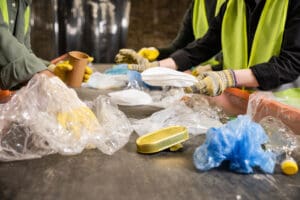
The Great Myths of #2 Plastic Recycling
Myth #1: All Plastics Are Not Recyclable
This is perhaps the most pervasive misconception. Not all plastics are created equal when it comes to recycling, and unfortunately, not all are recyclable. But #2 plastics are some of the most commonly recycled materials due to their market demand and utility in the production of other goods. However, despite their recyclability, challenges persist, deterring the effective recycling of #2 plastics throughout OKC.
Myth #2: It’s Too Much Effort to Sort
There’s an underlying belief that sorting through waste is a Herculean task, deterring many from attempting to recycle #2 plastics. In reality, single-stream recycling facilities have made the process remarkably more straightforward for consumers. Sorting glass, paper, and plastic is no longer necessary; however, understanding what types of plastic a facility can accept is crucial for this collective effort to work.
Myth #3: It Doesn’t Matter if I Don’t Recycle My #2 Plastics
The sheer volume of #2 plastics that go unrecycled is staggering. Each piece of packaging that hits a landfill becomes part of the massive plastic pollution crisis we face today. Every bit of recycling makes a difference, and when it comes to #2 plastics, the environmental impact of effective recycling cannot be overstated.
The Journey of #2 Plastics from Collection to Reprocessing
Collection
Once #2 plastics are placed in recycling bins, they are collected and transported to a material recovery facility (MRF), where they are sorted by type and then baled for shipping.
Processing
The bales of #2 plastics are then brought to a reprocessing facility, where they undergo several stages of sorting, cleaning, shredding, and melting. This process yields clean plastic flakes or pellets ready for use in the production of new items.
Remanufacturing
The final step involves using these plastic flakes or pellets to create new products. This can include anything from lawn furniture and playground equipment to carpet fibers and traffic cones.
The journey is a continuous cycle, with #2 plastics being recycled multiple times into various products before ultimately becoming waste once again. It’s a reminder that our actions have a significant impact on the planet and that responsible recycling is an integral part of preserving our environment.
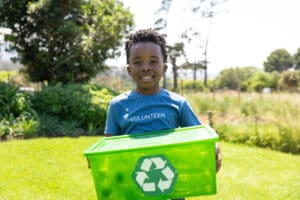
Tips for Properly Recycling #2 Plastics
Mastering the Art of Recycling #2 Plastics
To harness the benefits of recycling #2 plastics effectively here in OKC, it’s crucial to understand the best practices. Here are some in-depth tips that can help ensure your #2 plastics are recycled correctly, maximizing their potential to be reused:
- Cleanliness is Key: Before tossing your #2 plastic containers into the recycling bin, rinse them out. Residual food or liquid can contaminate entire batches of recyclable materials, making them unrecyclable. A quick rinse can make a significant difference.
- Cap On or Off?: For years, the common advice was to remove caps from bottles and jars because they are made from a different type of plastic. However, advancements in recycling processes now mean that it’s often better to leave the caps on. This prevents them from getting lost during sorting and ensures they too are recycled. Check with your local recycling program for their specific guidelines.
- Labels and Stickers: Most recycling facilities can handle labels and stickers on #2 plastic containers, so there’s no need to remove them. These are typically burned away during the reprocessing phase without affecting the quality of the recycled plastic.
- No Bags in Bins: Even though plastic shopping bags might be made of #2 or #4 plastic, they should not be placed in standard recycling bins because they can jam sorting machines. Instead, return them to supermarkets or locations that collect plastic bags for recycling.
- Understand Local Guidelines: Recycling rules can vary widely by municipality. Some areas may not accept certain forms of #2 plastics, such as milk jugs or laundry detergent bottles, in curbside pickup. It’s essential to be aware of your area’s specific guidelines to ensure your efforts contribute positively.
- Reduce, Reuse, Recycle: In the spirit of reducing environmental impact, consider ways to reuse #2 plastic items before recycling them. Many containers are sturdy enough for repurposing, which can extend their lifecycle and delay entry into the recycling system.
By following these tips, you can be confident that your #2 plastics are recycled effectively, contributing to the economy of resources and helping to mitigate the environmental impact of plastic waste. Recycling is a collective effort that starts with individual action. Your conscientious recycling habits can inspire others to follow suit, amplifying the positive impact on our planet.
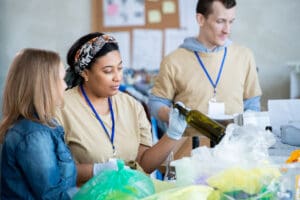
The Challenge We Inherit and the Roles We Play
Recycling is a dynamic and essential part of the tapestry of environmental sustainability. Each one of us must play our part, but knowing the truth about recycling, and #2 plastics particularly, enables us to act with greater precision. The onus is on us to recycle correctly and encourage others to do the same.
As we consider the substantial role each of us plays in fostering a sustainable environment, it’s evident that reducing our reliance on single-use plastics is a crucial step. For businesses seeking to minimize their environmental footprint, adopting Artesian Bottleless Water systems presents a forward-thinking solution. By transitioning to such innovative water solutions, companies can significantly reduce the demand for #2 plastics, like water bottles and jugs, aligning their operations with eco-friendly practices. Not only does this move underscore a commitment to sustainability, but it also sets a precedent for others in the industry, showcasing that positive environmental impact and business success can go hand in hand.
By choosing Artesian Bottleless Water, your Oklahoma City, OK, business takes a definitive step towards a greener, more sustainable future. Get your FREE 7-day trial started on a new bottleless water, water & ice, or commercial ice machine today.

